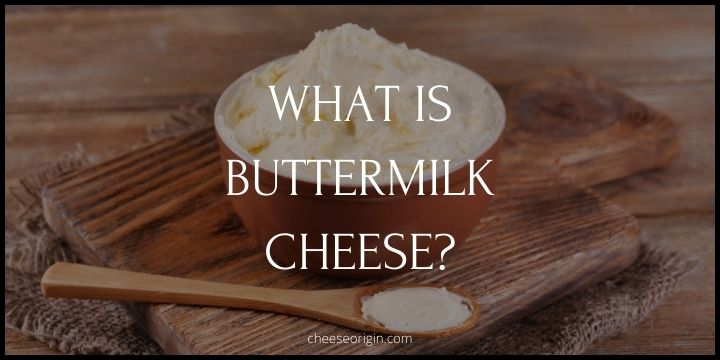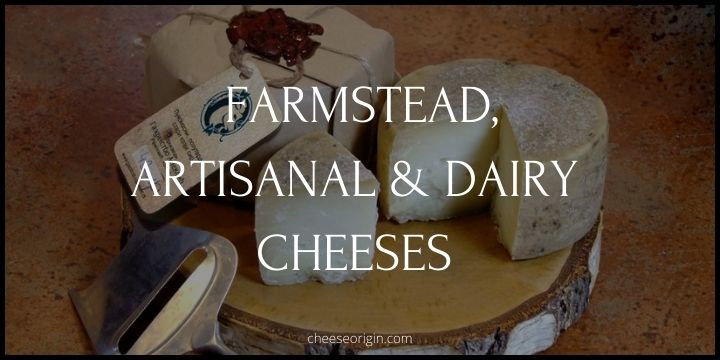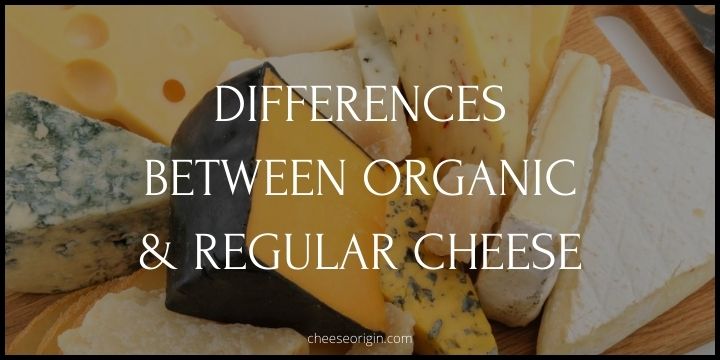Goat Cheese vs. Cow Cheese (THE DIFFERENCES)

The global goat milk product is expected to see significant growth between 2019 to 2025 at a CAGR of over 7%.
Needless to say, we can expect to see more goat cheese in our dining tables in the years to come and beyond.
The question is, do we know the differences between cow cheese and goat cheese despite their striking similarities?
Below are 8 key distinctions between these two common types of cheese:
| LABEL | COW CHEESE | GOAT CHEESE |
|---|---|---|
| Taste: | Neutral & Mild | Strong & Sour |
| Texture: | Dense & Firm | Tender & Soft |
| Lactose: | High | Low |
| Nutrition: | Lower in Minerals & Fat | Higher in Minerals & Fat |
| Color: | Off-white or Yellow | White |
| Fat Molecule: | Larger | Smaller |
| Milk Fat Content: | 4.2 to 5.5% | 3.4 to 4.2% |
| Availability: | Versatile, abundant & affordable | Made and sold locally & more expensive |
The Differences Between Cow Milk and Goat Milk
“Without milk, there can be no cheese worth its name.”
Jeremiah Say (CheeseOrigin.com)
Cow’s Milk
Cow’s milk is by far the most affordable and readily available milk in the United States.
However, different breeds of cow produce different qualities in their milk, so it is helpful to have a working understanding of the differences you might encounter.
- Holstein cows: These are the large black and white cows that you see dotting the countryside form coast to coast. Needless to say, they are the majority population in the United States. They produce enormous quantities of milk, however, the milk is somewhat watery, with fewer milk solids overall.
- Jersey cows: These cows are top pick for cheesemaking. They produce lesser milk than Holsteins, but their milk is richer in fat, protein, and nutrients. Jersey cows’ milk is often used to make butter, because of its creamy content.
- Brown Swiss, Dutch-belted, etc.: Many other breeds are present at dairy farms around the United States, but they are much less common than Holstein or Jersey. If you find a local farm with a less common breed of cow, just ask the farmer about the components of the milk.
Goat’s Milk
Packaged goat’s milk is becoming more readily available at grocery stores around the country. It still comes at a much higher price than cow’s milk, as a goat produces only about 10 percent as much milk as a cow.
One major benefit of goat’s milk is the lower lactose content which makes it easier on our stomachs. About 12 percent less per cup to be exact.
Recommended read: 4 Common Types of Animal’s Milk Used to Make Cheese
Milk: Nutrition Facts Comparison
*Nutrition facts table below is based on 1 cup serving (244 g)
| Cow Whole Milk | Goat Milk | |
|---|---|---|
| Carbohydrates | 12 g | 11 g |
| Fat | 8 g | 10.1 g |
| Calories | 148 calories | 168 calories |
| Calcium | 305 mg | 327 mg |
| Protein | 8 g | 8.9 g |
| Vitamin A (% daily value*) | 7 % | 9 % |
| Vitamin B-6 (% daily value*) | 5 % | 5 % |
| Vitamin B-12 (% daily value*) | 18 % | 3 % |
| Vitamin C (% daily value*) | 0 % | 5 % |
| Vitamin D (% daily value*) | 31 % | 31% |
| Magnesium (% daily value*) | 6 % | 8 % |
| Sodium | 104.9 mg | 122 mg |
| Potassium | 322.1 mg | 497.8 mg |
| Lactose | 4.9% | 4.2% |
| Cholesterol | 24 mg | 26.8 mg |
Comparing Goat Milk and Cow Milk Lactose
Digestive troubles and ‘lactose intolerance‘ caused by milk are due to milk’s high lactose content and a deficiency of the lactase enzyme in the gut.
| Goat Milk | Cow Milk | |
|---|---|---|
| Lactose Content | Contains about 4.1% lactose | Contains about 4.7% lactose |
| Digestibility | Easier to digest due to smaller fat globules and higher levels of short- and medium-chain fatty acids | May be harder to digest for some individuals due to larger fat globules |
| Suitability for Lactose Intolerant People | Some people with lactose intolerance may find it easier to tolerate | May cause discomfort in lactose-intolerant individuals |
Cow Milk Lactose
Harder long-aged cow’s milk cheeses such as aged Cheddars, Parmigiano-Reggiano and Apline-style cheeses should be easier on your stomach.
When lactic acid bacteria are added to milk in cheesemaking, they convert the lactose in the milk to lactic acid.
That is why aged cow’s milk cheese has lesser residual lactose in them.
Goat Milk Lactose
Goats’ and sheep’s milk have lower amounts of lactose to begin with, so even younger cheeses made from them can be much easier for a lactose-intolerant person to digest.
Recommended read: Why is Milk White?
Health Benefits: Goat Cheese vs. Cow Cheese
| Health Benefits | Goat Cheese | Cow Cheese |
|---|---|---|
| Calories | Lower in calories compared to many cow cheeses | Generally higher in calories |
| Fat Content | Lower in fat and saturated fat | Typically higher in fat and saturated fat |
| Protein | Slightly lower protein content | Slightly higher protein content |
| Calcium | Lower levels of calcium | Higher levels of calcium |
| Vitamin A | Higher in Vitamin A due to efficient β-carotene metabolism | Lower in Vitamin A |
| Lactose | Lower lactose levels, potentially easier to digest for people with lactose intolerance | Higher lactose levels |
| Vitamin B | High in Vitamin B, particularly B1 and B2 | Contains Vitamin B but is generally lower than goat cheese |
If you are going for health benefits, goat’s milk and cheese are hands-down the winner.
The reasons why are summed down below:
- Lesser sugar (lactose)
- Smaller fat molecules for easier digestion
- Has less-harmful casein (protein) variant
- Richer in vitamins and minerals
Learn more about the Health Benefits of Goat Cheese vs. Cow Cheese:
- Goat’s Milk: Is This the Right Milk for You? – Healthline
- Goat Milk: Are There Health Benefits? – WebMD
- Is goat cheese better than cow cheese? – Times of India
- 4 Reasons Goat Cheese Is Better Than Cow Cheese – Stylecraze
Also read:





